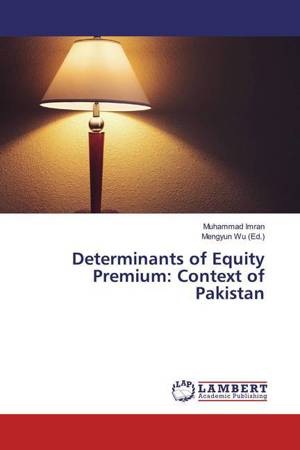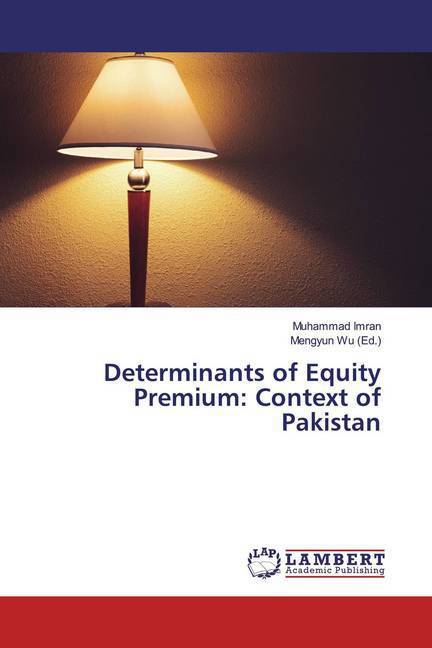
- Afhalen na 1 uur in een winkel met voorraad
- Gratis thuislevering in België vanaf € 30
- Ruim aanbod met 7 miljoen producten
- Afhalen na 1 uur in een winkel met voorraad
- Gratis thuislevering in België vanaf € 30
- Ruim aanbod met 7 miljoen producten
€ 54,45
+ 108 punten
Omschrijving
This book represents the determinants of firm level equity premium in context of Pakistan Stock Exchange. Equity premium is considered as one of the most important factors in finance literature. Information of the equity premium is a significant statistic for the useful distribution and valuation of capital resources. Equity premium can be used for valuating cost of equity as well as for the calculation of expected return from an investment. The study explores equity premium and its determinants in the context of Pakistan stock market. In this book we calculates the market premium, the individual asset premium for 306 non-financial stocks listed in Pakistan's stock exchange and sector premiums for 17 non-financial sectors. During the selected sample period the average market premium of Pakistan Stock Exchange, KSE100 Index is 20 percent. However, the average equity premium of individual firms is 8 percent. The sector wise equity premium is approximately between -2 percent to 61 percent annually. We macroeconomic and non-economic factors as determinants of firm level equity premium. Non-economic factors cause more volatility followed by macroeconomic factors.
Specificaties
Betrokkenen
- Auteur(s):
- Uitgeverij:
Inhoud
- Aantal bladzijden:
- 92
- Taal:
- Engels
Eigenschappen
- Productcode (EAN):
- 9786200279897
- Uitvoering:
- Paperback
- Afmetingen:
- 150 mm x 220 mm

Alleen bij Standaard Boekhandel
+ 108 punten op je klantenkaart van Standaard Boekhandel
Beoordelingen
We publiceren alleen reviews die voldoen aan de voorwaarden voor reviews. Bekijk onze voorwaarden voor reviews.









